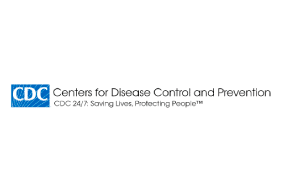
Marijuana use in the United States is increasing as more states legalize its medical and recreational use. Managing motor vehicle crash risks associated with marijuana impairment is important, as marijuana impacts a driver’s cognitive abilities. Other than alcohol, marijuana is the most frequently reported drug found in post-crash testing. This substance needs to be addressed as part of all workplace motor vehicle safety programs.
How Marijuana Affects Driving
Driving while impaired by any substance is dangerous. The delta-9-tetrahydrocannabinol (THC) contained in marijuana is a psychoactive (mind-altering) compound that affects areas of the brain that control the body’s movements, balance, coordination, memory, and judgment. It can impair coordination, distort perception, and lead to memory loss and difficulty in problem-solving. Specific to driving, THC can slow reaction times and reduce the ability to make decisions.
Studies have shown that the risk of being involved in a crash increases after marijuana use. Still, marijuana’s specific contribution to crash risk is unclear because it can be detected in body fluids for days or even weeks after use.

Best Practices for Employers
- Develop a comprehensive marijuana policy that accounts for current laws in each state where your company operates.
- A zero-tolerance policy for marijuana may not be possible, depending on your state’s laws. However, the best marijuana policies will:
- Prohibit workers using marijuana in any form while at work.
- Prohibit workers from being under the influence of marijuana when they report for work.
- Partner with an attorney to review your policy and provide feedback. Make sure the attorney understands state marijuana laws and is up-to-date on marijuana-related case law.
- Outline specifics of drug testing if it is a part of your marijuana policy.
- Make sure your policy describes the conditions under which testing will occur (e.g., ongoing periodic random testing, any time impairment is suspected, or only after a crash), the threshold that will constitute impairment, and the consequences of a positive test.
- Seek out and use a medical professional with training in interpreting THC drug tests.
- Warn drivers that Cannabidiol (CBD) product labeling is not regulated. Labeling is frequently inaccurateexternal icon. Consumption of CBD products with significantly higher levels of THC than what is on the producer’s label could result in a positive drug test.
- Provide access to support for employees with drug problems, either through in-house programs or referrals to local resources.
- Educate drivers on:
- The effects of marijuana and other drugs on safe driving and cognitive abilities.
- The details of your company’s marijuana policy, including special considerations for the state or states where they work.
- Similar impairments that can result from fatigue, medications, and certain medical conditions.
- Train managers and supervisors on:
- The specific responsibilities of managers/supervisors outlined in the policy.
- How to recognize and document signs of impairment.
- Monitor the relevant state marijuana laws and any improved methods for determining impairment. Update your policies as needed.
The Bottom Line
Despite some unanswered questions about marijuana’s role in crash risk, workers under the influence of marijuana do not have the skills needed to drive safely. Because marijuana use is on the rise for adults in the U.S., this substance needs to be addressed by all workplace motor vehicle safety programs.
Acknowledgements
Natalie Hartenbaum, MD, MPH, FACOEM (OccuMedix)
References
- National Conference of State Legislatures. Drugged Driving, Marijuana-Impaired Driving. https://www.ncsl.org/research/transportation/drugged-driving-overview.aspxexternal icon Accessed July 30, 2021.
- National Institute on Drug Abuse. Marijuana Drug Facts. National Institute on Drug Abuse: Marijuana Drug Factsexternal icon Accessed July 30, 2021.
- Lenné MG, Dietze PM, Triggs TJ, Walmsley S, Murphy B, Redman JR. The effects of cannabis and alcohol on simulated arterial driving: Influences of driving experience and task demand. Accid Anal Prev. 2010;42(3):859-866. doi: 1016/j.aap. 2009.04.021external icon.
- Hartman RL, Huestis MA. Cannabis effects on driving skills. Clin Chem. 2013;59(3):478-492. doi: 1373/clinchem.2012.194381external icon.
- Hartman RL, Brown TL, Milavetz G, et al. Cannabis effects on driving lateral control with and without alcohol. Drug Alcohol Depend. 2015;154:25-37. doi: 1016/j. drugalcdep.2015.06.015external icon.
- Elvik R. Risk of road accident associated with the use of drugs: a systematic review and meta-analysis of evidence from epidemiological studies. Accid Anal Prev. 2013;60:254-267. doi: 1016/j.aap.2012.06.017external icon.
- Ramaekers JG, Berghaus G, van Laar M, Drummer OH. Dose related risk of motor vehicle crashes after cannabis use. Drug Alcohol Depend. 2004;73(2):109-119. doi: 1016/j.drugalcdep.2003.10.008external icon.
- Li M-C, Brady JE, DiMaggio CJ, Lusardi AR, Tzong KY, Li G. Marijuana Use and Motor Vehicle Crashes. Epidemiol Rev. 2012;34(1):65-72. doi: 1093/epirev/mxr017external icon.
- Asbridge M, Hayden JA, Cartwright JL. Acute cannabis consumption and motor vehicle collision risk: systematic review of observational studies and meta-analysis. BMJ. 2012;344:e536. doi: 10.1136/bmj.e536external icon.
- Rogeberg O, Elvik R. The effects of cannabis intoxication on motor vehicle collision revisited and revised. Addiction. 2016 Aug;111(8):1348-59. doi: 1111/add.13347external icon. Epub 2016 Apr 25. Erratum in: Addiction. 2018 May;113(5):967-969. PMID: 26878835
- Compton, R. (2017, July). Marijuana-Impaired Driving – A Report to Congresspdf iconexternal icon. (DOT HS 812 440). Washington, DC: National Highway Traffic Safety Administration.
